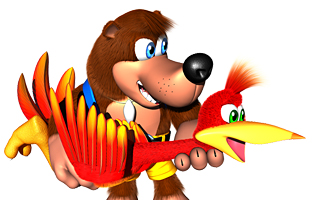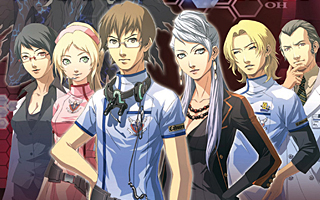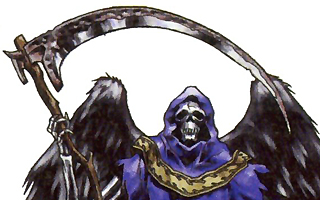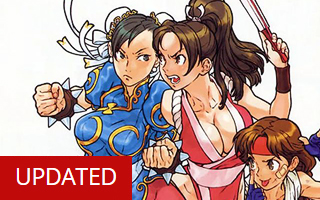Show Me the Money!
Top 10 Best Video Game Currencies of All Time!
Nearly every aspect of modern society is shaped by economics. A person’s economic standing can influence where they live, where they work, and who they spend their time with. Money is sometimes described as the root of all evil, but it also makes the world go ’round. It plays an important role in countless video games, too. Games often have their own economies and monetary policies, and this list looks at the most interesting and noteworthy currencies in gaming history. A number of things will be taken into consideration for the purpose of this countdown. We’ll consider how the currency is obtained, how it’s spent, and how big of a role it plays. To keep things interesting, we’re only be looking at fictional currencies.
10
Rings
Sonic the Hedgehog Series

Many currencies from around the globe have practical purposes outside of their use as commodity money. Colonists in Virginia and North Carolina accepted tobacco leaves as legal tender in the 1600s, for example, and a regional Italian bank currently accepts parmigiano-reggiano cheese as collateral for small business loans. It’s only fitting that fictional currencies would be multifaceted as well. On that note, the gold rings from Sonic the Hedgehog serve many purposes that have nothing to do with economics. Players can increase their score by collecting them, and the rings can grant bonus lives and continues if enough of them are gathered. The rings also act as the power source for Sonic’s “Super Sonic” transformation. Their primary purpose is to protect Sonic and his friends, and they act as a safety net of sorts. As long as Sonic is holding onto a ring, he’ll be able to survive almost anything. There are over 100 games in the Sonic universe, so it’s not surprising that the distinctive rings are occasionally used as a form of currency. Sonic Riders, Sonic the Hedgehog (2006), Sonic Chronicles, and Sonic Unleashed all featured shops that accepted rings as a form of payment. Depending on the circumstances, Sonic has had the opportunity to purchase everything from boxing gloves to prune juice. The rings aren’t used as money in most of Sonic’s most iconic adventures, and that’s the only reason they’re not ranked higher on this list. They did inspire the halos from Bayonetta, however, so it would appear that their value as a currency cannot be confined to a single franchise.
9
Simoleons
The Sims Series

Simoleon was a colloquial term for money in the 1890s, but it was all-but-abandoned when Maxis co-opted the word in 1989. The simoleon is the official currency of SimCity, and nearly every action in the game revolves around money in one way or another. Everything you build has a price, and you’ll have to be mindful of the budget as you attempt to expand the city. Simoleons are also the unit of currency in The Sims, and it can be assumed that it’s the national currency of SimNation. The Sims need money to buy food and pay bills, and failure to meet their financial obligations may result in an untimely visit from the repo-man. Fortunately, there are many ways for the Sims to rake in the cash. They can potentially get jobs, start their own businesses, or pursue any number of investment opportunities. Money can also be inherited, found, or obtained through illegal means. You can sometimes find valuable items by rummaging through garbage, and there are also literal money trees that grow simoleons. You can even wish for money by summoning a genie! (Of course, the easiest way to obtain more money is by using a cheat code.) Whether you’re planning a city or simply trying to live your life, simoleons are a necessity in SimNation.
8
Zenny
Various Capcom Games

Black Tiger is a hack-and-slash arcade game from Capcom that was released way back in 1987. The game follows the exploits of a dragon-slaying barbarian who hopes to save his kingdom. During his adventure, the brave hero can gather coins called zenny and use them to buy weapons, armors, keys, and potions. The following year, Capcom released a side-scrolling shooter called Forgotten Worlds that was set in the 29th century. Even though the game was seemingly unrelated to Black Tiger, it also used zenny as a form of currency! Capcom incorporated zenny into dozens of games in the years that followed, and they were especially prominent in various Mega Man, Breath of Fire, and Monster Hunter titles. The manner in which zenny is acquired varies from one game to the next, and you’ll obviously have different things to buy in each outing. Still, I give Capcom a lot of credit for sticking with the gimmick for so long. Franchises that are set in completely different eras, timelines, or realities all use variations of the same currency, and this speaks to the universal nature of money.
7
Munny
Kingdom Hearts Series

In the fantastical world of Kingdom Hearts, munny can typically be acquired by defeating enemies. The prospect of children slaughtering shadowy figures and stealing their money is pretty dark, but a sprinkling of Disney magic makes the scenario acceptable for all ages! Munny comes in colorful (and surprisingly bouncy) denominations, and it’s always exciting to see the blue-and-yellow balls burst from the bodies of your defeated foes. In that respect, the experience could be likened to smashing open a pinata. Munny can also be obtained by selling off unwanted items, but the murder route is more fun. Collecting munny actually becomes easier as you progress, since special abilities will allow you to attract munny from further away or increase the amount you gain from each battle. As the official currency of the Kingdom Hearts universe, munny can be used to purchase all sorts of interesting items. You can also lose your munny by slipping on banana peels, but that sort of thing happens in the real world too. As an aside, I appreciate how munny uses the same spelling convention that Winnie the Pooh uses for hunny honey.
6
Bolts
Ratchet & Clank Series

In the Ratchet & Clank series, bolts can be used to purchase weapons, gadgets, and an assortment of other items. They can be found in various locations, and they are commonly obtained by defeating enemies, breaking crates, or completing challenges. Bolts come in all shapes and sizes, and their appearance changes from one game to the next. Their name is somewhat misleading, however, since some of them more closely resemble nuts, springs, and gears. (In Ratchet and Clank: Rift Apart, players could potentially change the appearance of the bolts so they’d resemble rupees from the Zelda series!) Bolts are interesting from a visual standpoint, and Insomniac deserves credit for coming up with a thematically appropriate currency for their series. That being said, the true value of any currency is its purchasing power. Although inflation is wildly unpredictable in the Ratchet & Clank universe, there’s never a shortage of interesting things to buy. In various games, players could purchase everything from transformation beams that turn enemies into sheep, to giant disco balls that can force enemies to dance.
5
Military Grade Rounds
Metro Series

In modern society, money is an abstract concept. Although it has a perceived worth, most money has no tangible value. The Metro series takes an interesting approach with respect to its in-game currency. The games takes place in Russia during the aftermath of a nuclear war. Since most bills and coins were destroyed in the conflict, military grade rounds are accepted as legal tender. Although there are random cashes scattered throughout the landscape, 5.45x39mm rounds are hard to come by and difficult to counterfeit since it’s almost impossible to match pre-war standards. Its limited nature allows the ammunition to store value and acts as a hedge against inflation. It also forces you to be mindful of your spending habits. Military grade rounds can be exchanged for weapons and equipment, but they’re also paramount to your survival. The post-apocalyptic landscape is crawling with dangerous mutants and opportunistic bandits, but you’ll erode your financial safety net with each round you fire. Most first-person shooters follow a “shoot everything that moves” model, but Metro has a cost-benefit analysis built into every enemy encounter. The tangibility of the bullets will change the way you think about currency.
4
Bottle Caps
Fallout Series

Fallout is set in a post-apocalyptic future where the United States has been ravaged by nuclear war. Although certain regions attempted to introduce new currencies following the war, bottle caps quickly became the standard currency of the wasteland. There were several reasons why caps were widely accepted by merchants and traders alike. They were as durable, portable, and recognizable as typical coins, and they were just as hard to counterfeit. Most of the machinery required to make them was destroyed during the war. You could still find fake caps floating about, but they were so time-consuming to make that it was barely worth the effort. Most of the caps came from Nuka-Cola bottles, and the process of painting them and replicating the logos became a hassle in the post-war landscape. Even though bottle caps could be found in every region in the country, they were still finite in nature. This allowed them to hold their value against inflation, which made them more stable than established fiat currencies. Bottle caps were recognized by wastelanders across the country, but survivors in the Appalachian region were likely the first to adopt them as a form of payment. As part of a promotion with the Nuka Cola Corporation in the last 21st century, robots at the Whitespring Resort had been programmed to accept bottle caps in lieu of money. The bombs were dropped before the promotion had concluded, so the robots continued to accept caps after the war.
3
Coins
Mario Series

No discussion about video game currency would be complete without mentioning the Mario brothers. Coins have been an integral part of Mario’s adventures since 1983, after all, and they were the first thing that sprung to mind when I started this countdown. The iconic gold coins were first seen in the original Mario Bros., but they played a much bigger role in the Super Mario Bros. series. (New Super Mario Bros. 2 was entirely built around a coin-collecting gimmick!) The coins are scattered all throughout the Mushroom Kingdom, and they provide players with an incentive to find secret blocks and alternate paths. Mario can typically earn himself an extra life by collecting 100 coins, and this is much cheaper than health insurance. Coins have a regenerative effect in Super Mario 64 and they can somehow increase your speed in Super Mario Kart, but they can also be exchanged for goods and services. Coins are used as a proper currency in Super Mario RPG, Mario & Luigi, and Paper Mario. Players can also use coins to buy items and power-ups in the Mario Party games. In various outings, Mario collects red coins, blue coins, green coins, purple coins, star coins, moon coins, dragon coins, frog coins, and probably several other variations. At the end of the day the garden-variety gold coins are arguably gaming’s most recognizable form of currency.
2
Rupees
The Legend of Zelda Series

Rupees from The Legend of Zelda share their name with India’s official currency, but it’s purely coincidental. (Nintendo chose a whimsical name that sounded vaguely similar to ruby, and they didn’t intend to reference any real-world currency.) The distinct gem stones come in an assortment colors (signifying various denominations), and they are scattered all throughout the Land of Hyrule. Link can earn Rupees by defeating enemies, cutting grass, or smashing pots that don’t belong to him. They can also be found in treasure chests, and it’s not unusual to find hidden rooms that are completely lined with rupees. In some games, Link can even win rupees by gambling! The true value of any currency is its purchasing power, and the Zelda games give players plenty of ways to spend their hard-earned money. You can buy everything from health potions to bombs, and some of the best equipment in the series can only be obtained by purchasing it. Rupees have played an important role in (almost) every Zelda game, and they were especially significant in Freshly-Picked Tingle’s Rosy Rupeeland. The entire point of this adventure was to feed rupees to a mysterious tower in order to increase its height. Players could earn more money by taking on various side missions, obtaining new items, and haggling with others to get better deals. Few in-game currencies are more recognizable than rupees are, and they even have a distinct sound when you pick them up. The six-sided design of the rupees was “inspired” by the gold ingots in Clu Clu Land, but it’s fair to say that the Hyrulean gemstones made a bigger impact.
1
Bells
Animal Crossing Series

Animal Crossing is a series that (ostensibly) has no mandatory objectives. Although players are given an assortment of tasks to complete, they can set their own schedules and choose their own activities. That being said, many of these activities revolve around money. At the onset of each game, players are riddled with debt after moving into a new village. A local merchant named Tom Nook typically fronts you some cash for a house, so you’re almost always indebted to him in some way. Bells are the official currency of Animal Crossing, and there are many ways to acquire them. In order to pay off your mortgage, you’ll take on odd jobs and run errands for your neighbors. You’ll also be able to scrounge for resources and sell them at Tom Nook’s store. Tom accepts almost everything, so it’s fairly easy to turn a profit. You’d be surprised how much money you can make by catching insects, gathering fruit, and collecting seashells. If the daily grind is too much for you, you can simply plant bells in the ground and grow a bell tree! (This is another instance where money literally grows on threes!) Paying off your house is your first priority, but you can also use your hard-earned money to buy clothes, furniture, and other items. You’ll find everything from video game consoles to creepy skeletons, and the store has new items in stock every day. Most of these items are superfluous, but the game makes you feel like you need them anyway. Escaping from the cycle of debt is surprisingly difficult, and earning bells is an intrinsic part of the Animal Crossing series. It would be easy to paint Tom Nook as a predatory lender, but it’s hard to complain. I was able to pay off my house in a few days just by selling bugs to his nephews! Tom Nook also let me buy NES games with bells, while Nintendo expects me to use real money.





Do you agree with this list? Let us know what you think by leaving a comment below. Your opinion matters!